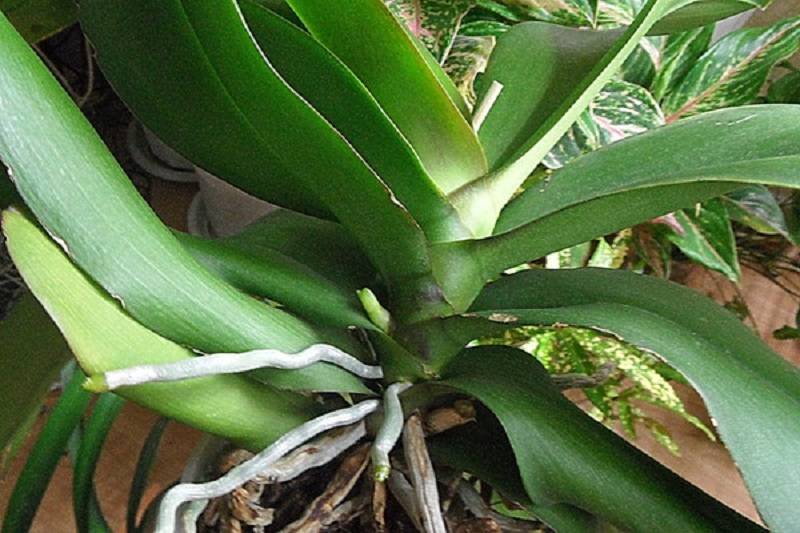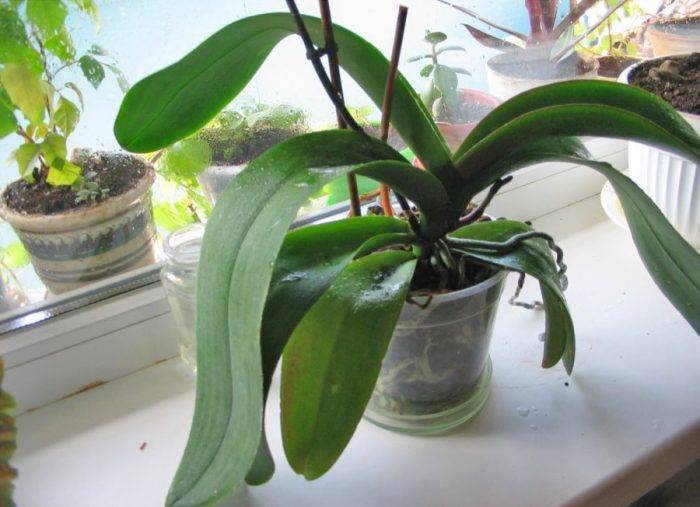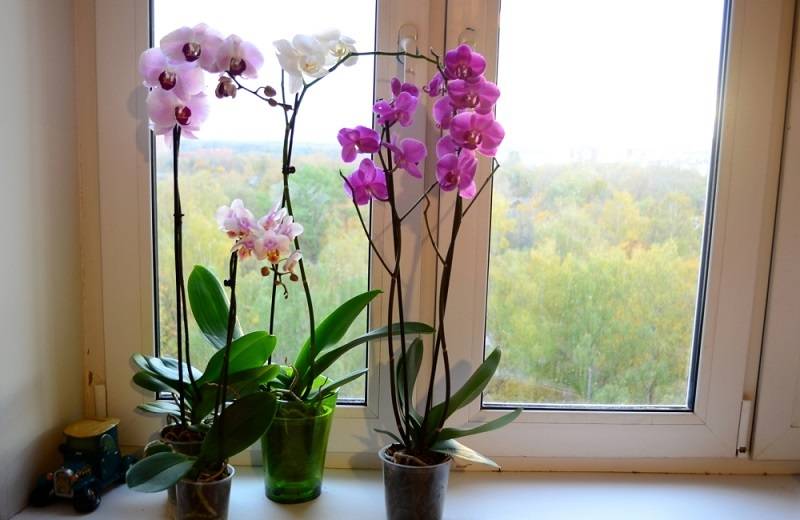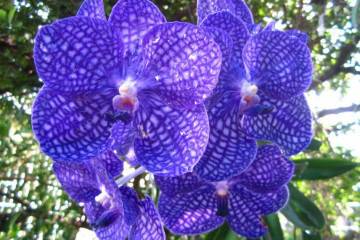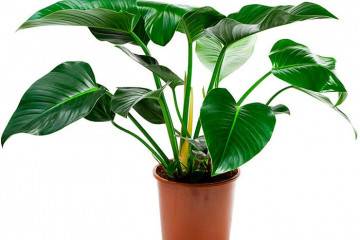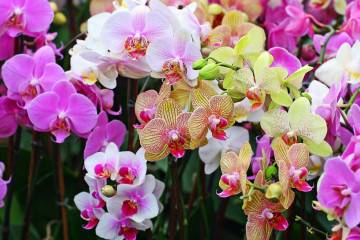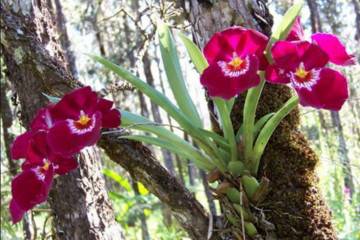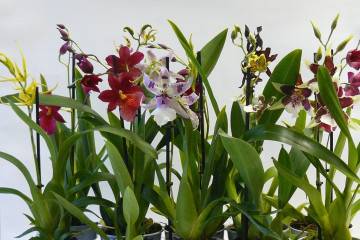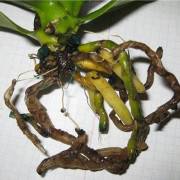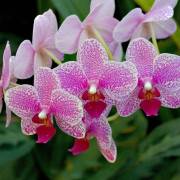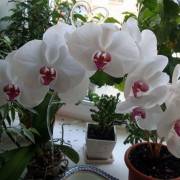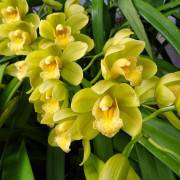Orchid care: examples of growing a flower at home
Content:
Spectacular tropical orchid beauties are very diverse. Varieties differ in size, shape and color of leaves, number of flowers. And there is no need to talk about the color variety. This colorful beauty in a flower shop simply scatters eyes, and it is often very difficult to make your choice: each is good in its own way. And in order for the plant to grow and develop normally, and even regularly please with lush flowering, it needs proper care. Otherwise, the orchid is easy to ruin.
Orchid appearance
Perhaps everyone knows what an orchid looks like. Orchid flowers belong to one of the most numerous families. Most of the plants are epiphytes, they use other plants as a support, but they do not parasitize on them. Thanks to this, orchids do not depend on the soil and in natural conditions have greater access to sunlight.
The root system of this tropical plant is a vital organ for it. It is thanks to the aerial roots that the orchid is securely fixed on the trees and has the ability to be positioned vertically. Also, the roots, along with the leaves, are involved in the process of photosynthesis. And also the root system is the main source of nutrition for the orchid, with its help the plant is able to absorb moisture and nutrients from the bark of supporting plants and from the air.
The smaller part of orchids is represented by lithophytes - plants that grow on rocks and stony soils. Their root system is represented by rhizomes or tubers.
The leaves of the flower are simple, alternate, the stem can be either long or short, creeping or erect, it all depends on the variety.
Orchid flowers are variegated in color and are divided into two types: either in the form of a simple spike, on which the flowers are located singly, or in the form of a simple brush, on which flowers on pedicels grow along the stem.
The orchid flower in natural conditions is pollinated by insects, sometimes showing rather unusual and amazing mechanisms (they are traps, have sticky legs, imitate certain smells, have an intoxicating aroma). The fruit of an orchid is a capsule containing several million tiny seeds.
The main varieties of orchids
What are the orchids, you can list for a long time. The most colorful varieties of them are:
- Hisis. Epiphytic plant with large oval leaves that fall for the winter. The flowers are large, white or creamy peach. Khizis loves diffused light, high humidity and good ventilation;
- Monza. It is an orange-red wax wax with an unusual interesting flower shape. Differs in abundant flowering;
- Diamond King. The variety is rarely found in flower shops. Differs in the presence of several peduncles and numerous flowers on it. The leaves are large, fleshy;
- Andorra.The plant has tall branches with bright spotted flowers of a lilac-burgundy hue. Blooms profusely and for a long time;
- Jewel. This species has a low stem and elongated dark green leaves. Peduncle with racemose inflorescence bends slightly. Large flowers bloom from November to February.
Plant care at home
Orchid care is not as difficult as it might seem at first glance. However, the basic rules for keeping a plant will have to be followed strictly. Otherwise, the capricious beauty will immediately make it clear that something is not to her liking.
So, you should not rearrange the flower pot without special reason. And if this is necessary, then in no case is it turned the other side to the light source - this is a great stress for the orchid.
Temperature regime
When growing an orchid, the appropriate temperature regime will depend on its variety. So, for phalaenopsis and other tropical varieties, a daytime temperature of 32-33 ° C is suitable. At the same time, in winter, it should not fall below 15 ° C.
For dendrobiums and miltonia, which are native to the subtropics, a daytime temperature of 25-27 ° C is suitable.
Lighting
One of the main secrets of how to grow a healthy and blooming orchid is the need to provide it with sufficient light. The plant needs diffused lighting for 10-12 hours a day. Therefore, in the autumn-winter period, many flower growers use additional illumination of orchids with fluorescent lamps, especially for phalaenopsis. Otherwise, it is not necessary to expect that the orchid will throw out the arrow and bloom.
The soil
For planting indoor orchids, a special substrate is used. Certain requirements are imposed on it: it must be moisture-absorbing, breathable and loose. Thanks to this, the roots of the plant will be able to breathe easily and absorb water.
You can use a ready-made substrate sold in flower shops. But at the same time, it is important to buy a quality product in order to avoid the release of harmful substances. You can also make your own orchid planting mixture.
Top dressing
The main step-by-step rules for fertilizing a flower are as follows:
- during active growth, the plant needs nitrogen, it contributes to the abundant build-up of green mass;
- during the period of laying and forming buds, it is important to feed the orchid with phosphorus and calcium, this will provoke a lush and long flowering and make the decorative leaves more attractive.
You can not make top dressing in such cases:
- if the plant was recently purchased or a propagation procedure was carried out;
- if the orchid is blooming;
- if the plant has recently been transplanted or is sick. In this case, it is better to use a growth stimulant;
- during the rest period.
Watering and humidity
The plant should be watered very carefully. It is best to use rain or melt water, in extreme cases, boiled.But in no case should you pour water into the pots directly from the tap, since the chlorine contained in the tap water will burn the roots of the plant.
It is important to ensure that the roots do not stay in constant moisture, this very quickly causes them to rot. Therefore, watering is carried out only after the substrate has dried, and excess water from the sump must be removed immediately after watering.
Phalaenopsis, cymbidum, odontoglossum require more frequent watering. Very carefully you need to carry out the watering procedure for dendrobium, cattleya, hummingbirds, oncidum.
Orchids need high humidity. Irrigation, in addition to having a short-term effect, often causes fungal infections and plant death. Therefore, if the air in the house is too dry, it is advisable to use a humidifier.
Orchid: home care after and during flowering
Taking care of an orchid during flowering is quite simple: it needs to be provided with regular watering and high humidity. In this case, it is important to ensure that the root system is not in constant moisture. You should not change the location of the tropical beauty and apply top dressing.
At the end of flowering, watering is reduced and the plant is fed. If necessary, transplants are also carried out during this period.
How to grow an orchid at home is known to many lovers of these bright tropical beauties. Although they are considered finicky, it is not that difficult to grow them. The main thing is to adhere to the basic rules of care and find a suitable place for the flower. An indicator of the correct maintenance of a plant is a long and abundant flowering.


